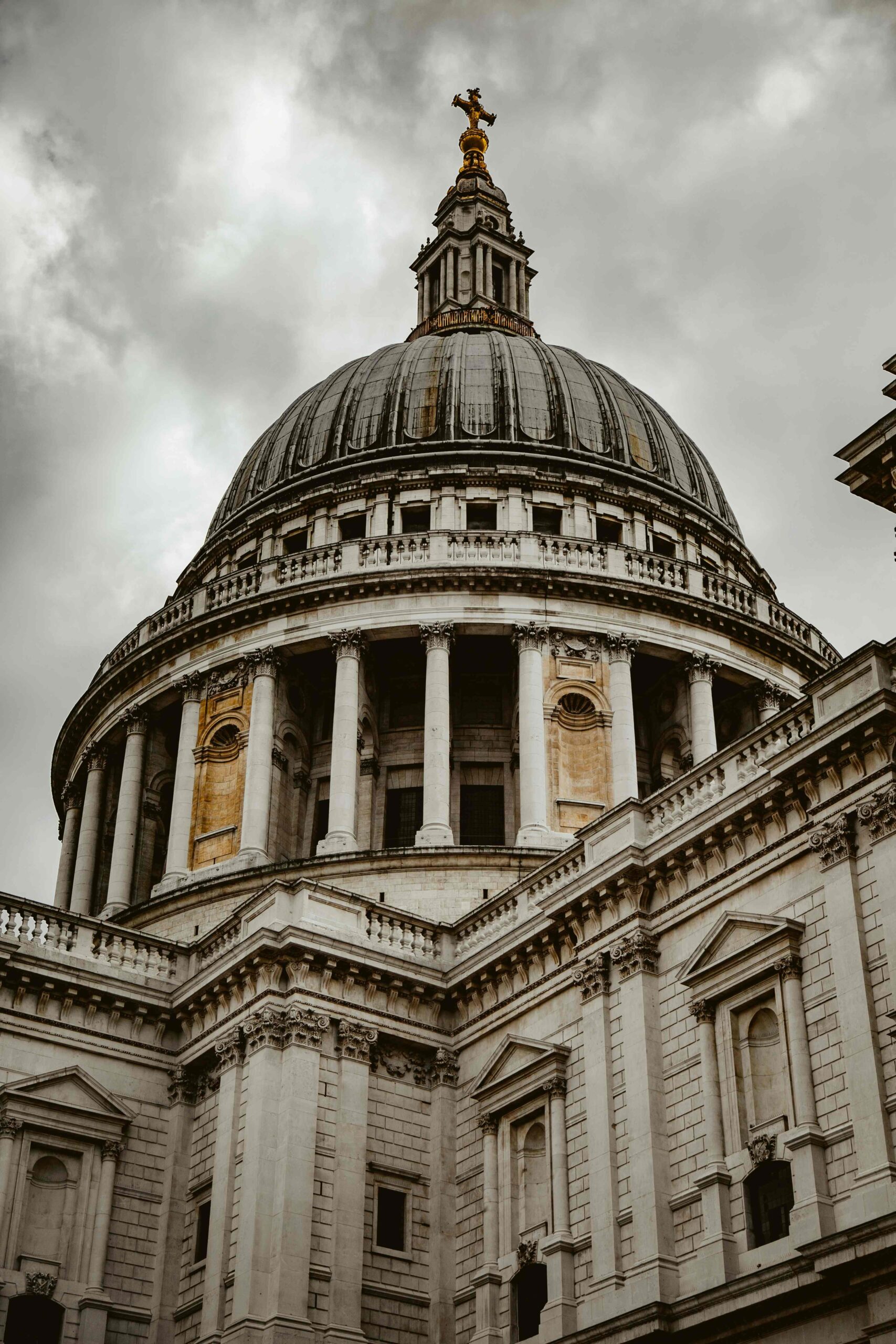Our website uses cookies to improve your experience. By continuing to browse the site, you are agreeing to our use of cookies as per our privacy policy.
A Class ACT
St Paul’s Cathedral
27 June 2024
|
Kris Charij
Kris Charij, Project Manager at ACT, explains why St Paul’s Cathedral is a London icon. We peer inside to admire its awe-inspiring dome, take in its rich history and explore its majestic architectural features.
Founded in 604 AD, St Paul’s Cathedral has throughout the years been destroyed by Vikings and several fires. The current structure, designed by Sir Christopher Wren, was built after the Great Fire of London consumed its predecessor in September 1666. Although some notable artefacts survived, the entire structure collapsed, with a vast amount of lead from its roof melting and pouring into the surrounding streets.
St Paul’s took 35 years to build – Wren was the first person buried in its tombs in 1723. The Cathedral has also been a site of significant historical events, including the funerals of Lord Nelson and Sir Winston Churchill, and the wedding of Prince Charles and Lady Diana Spencer. Dr Martin Luther King Jr. once gave a sermon there, drawing in a congregation of over three thousand people.

Built primarily from elegant portland stone, St Paul’s is a stunning example of the decorative English baroque style. Its distinctive façade is adorned with carved friezes, twin bell towers and a magnificent portico supported by Corinthian columns. Its most distinctive feature is the majestic dome, one of the largest in the world. Measuring 365 feet (111m) high, it still dominates London’s skyline today. The dome’s design incorporates an innovative triple-shell structure, an engineering marvel of its time composed of three shells: an outer lead-encased dome, a concealed brick cone for structural support, and an inner masonry shell dome.
The interior boasts a host of impressive features such as ornate ceilings, marble floors, elegant ironwork, intricate mosaics and exquisite detailing on the stone and woodwork. Situated high above the ground is the whispering gallery, a circular walkway that surrounds the interior of the Cathedral’s dome and offers stunning views of the grand nave below. Its unique acoustic properties allow visitors to whisper to one another from opposite ends of the gallery and still be clearly heard.


Kris explains: “I admire the Cathedral for its scale, history, and majesty. It has remained standing throughout turbulent events and has come to symbolise resilience and hope for the British people. St Paul’s survived the Blitz during World War II, despite suffering significant damage.”
During the great fire raid of 29 December 1940, approximately 100,000 bombs fell on London. St Paul’s sustained two direct bomb hits which lifted part of the roof, smashed every window and created a hole in the Cathedral’s floor from falling masonry through which the crypt could be seen. Nevertheless, the dome of St Paul’s remained untouched and towered over the surrounding buildings that had been reduced to rubble, flames and smoke – a famous image that became a patriotic symbol.
[Photo credits: Nick Fewings, Aaron Gilmore, Joel and Jasmin Førestbird, Robert Bye (via Unsplash) and Corbis]

